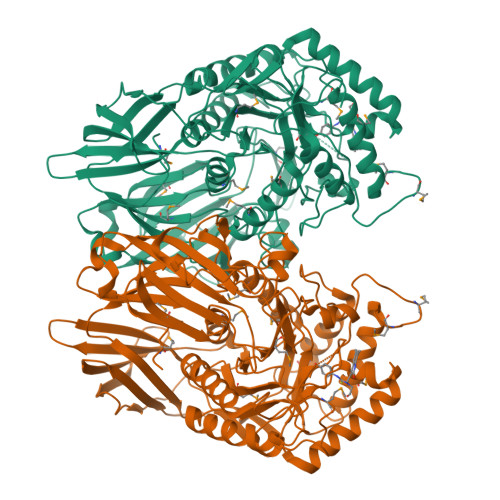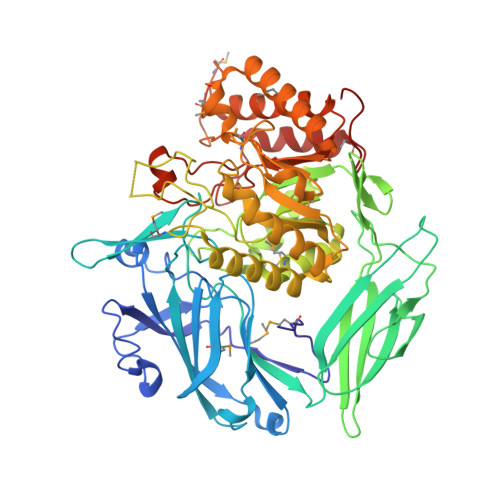Structure and Inhibition of Microbiome beta-Glucuronidases Essential to the Alleviation of Cancer Drug Toxicity.
Wallace, B.D., Roberts, A.B., Pollet, R.M., Ingle, J.D., Biernat, K.A., Pellock, S.J., Venkatesh, M.K., Guthrie, L., O'Neal, S.K., Robinson, S.J., Dollinger, M., Figueroa, E., McShane, S.R., Cohen, R.D., Jin, J., Frye, S.V., Zamboni, W.C., Pepe-Ranney, C., Mani, S., Kelly, L., Redinbo, M.R.(2015) Chem Biol 22: 1238-1249
- PubMed: 26364932
- DOI: https://doi.org/10.1016/j.chembiol.2015.08.005
- Primary Citation of Related Structures:
4JKK, 4JKL, 4JKM, 5CZK - PubMed Abstract:
The selective inhibition of bacterial β-glucuronidases was recently shown to alleviate drug-induced gastrointestinal toxicity in mice, including the damage caused by the widely used anticancer drug irinotecan. Here, we report crystal structures of representative β-glucuronidases from the Firmicutes Streptococcus agalactiae and Clostridium perfringens and the Proteobacterium Escherichia coli, and the characterization of a β-glucuronidase from the Bacteroidetes Bacteroides fragilis. While largely similar in structure, these enzymes exhibit marked differences in catalytic properties and propensities for inhibition, indicating that the microbiome maintains functional diversity in orthologous enzymes. Small changes in the structure of designed inhibitors can induce significant conformational changes in the β-glucuronidase active site. Finally, we establish that β-glucuronidase inhibition does not alter the serum pharmacokinetics of irinotecan or its metabolites in mice. Together, the data presented advance our in vitro and in vivo understanding of the microbial β-glucuronidases, a promising new set of targets for controlling drug-induced gastrointestinal toxicity.
Organizational Affiliation:
Department of Chemistry, University of North Carolina at Chapel Hill, NC 27599-3290, USA.




















